 |
 |

THE PROJECT BY THE ARCHITECT A.L.
VITBERG
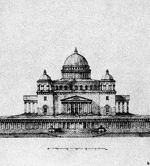

THE PROJECT PRESENTED BY K.A. TON
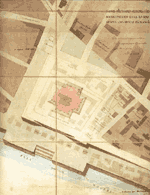

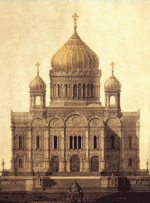



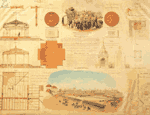

THE ALEKSEYEVSKY CONVENT
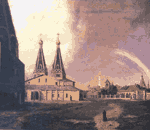

THE BUILDING OF THE ORIGINAL
CATHEDRAL
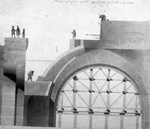

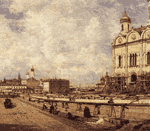

THE MEMORIAL TO ALEXANDER III
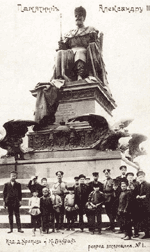

|
 |
 |
 |
 |
The history of the Cathedral begins
on December 25, 1812. This was the day that the last soldiers of Napoleons' 600,000 man
army were driven out of Russia. Emperor Alexander I signed a Manifesto ordering the
construction of a magnificent Cathedral in honor of Christ the Savior in Moscow as a
thanksgiving to God and to honor the victorious Russian army.
"To signify Our gratitude to Divine Providence for saving Russia from the doom that
overshadowed Her and to preserve the memory of the unheard of efforts, loyalty and love
for our Faith and Homeland displayed during these difficult days by the Russian people, We
hereby intend to build a Cathedral in honor of Christ the Savior in our capital city of
Moscow, wherein the appropriate Decree will be issued in due time. May the Almighty bless
Our intentions. May our intentions be fulfilled. May the Cathedral stand for many
centuries. Let the incense of thanksgiving, together with love and a desire to imitate the
feats of our anscestorsl feats, burn before the holy altar of God for many
generations."
The first project called for a Cathedral built by the architect Vitberg. On October 12,
1817, five years after the French entered Moscow, the cornerstone of this Cathedral was
triumphantly blessed. The first site was on the Sparrow Hills, between the Smolensk and
the Kaluga roads. However, unsteady ground and underground waters made this site
unfeasible. On April 10, 1832 Emperor Nicholas I approved a new project presented by K. A.
Ton. The emperor chose the new site personally - on the bank of the Moscow River, near the
Kremlin. He convened a Special Commission for the Construction of the Cathedral in 1837.
The Alekseyevsky Convent and Church of all Saints that were located on the chosen site
were dismantled. The convent was moved to Sokolniki (then the northeastern outskirts of
Moscow) and the excavations for the foundations began. The cornerstone was laid on
September 10, 1839.
The original Cathedral took forty years to build. The walls of the lower level were
completed in 1841. The arch of the large cupola was joined in 1846. The exterior facing
was completed three years later and work was begun on the metal roofs and cupolas. The
large cupola was completed in 1849. The exterior scaffolding was removed in 1860, when the
Cathedral first was unveiled in all of its glory. The bronze balustrade on the roof was
installed in 1862 (even though it had not been included in the original plans). The
riverbank and squares surrounding the Cathedral, as well as the exterior lanterns were
completed by 1881. The interior frescoes were also almost complete by this time.
The Emperors Alexander I, Nicholas I, Alexander II and Alexander III decreed the
construction of the Cathedral. The recently canonized Philaret (Drozdov), the Metropolitan
of Moscow and Kolomensk, and his vicar bishop Leonid (Krasnopevkov) blessed and oversaw
most of the planning and creation. Prince D. V. Golitsyne, the governor-general of Moscow,
together with the Commission for the Construction of the Cathedral oversaw the actual
construction.
The best architects, builders and artists of the time fulfilled K. Ton's designs. V.
Surikov, baron T. Neff, N Koshelev, G. Semiradsky, I. Kramskoy, V.P. Vereshchagin, P.
Pleshanov, and v. Markov (all members of the Russian Academy of Arts) took twelve and a
half years to create the unique frescoes. Baron P. Klodt, N Ramazanov, and A. Loganovsky
created the exterior sculptures. Count F. Tolstoy designed the Royal Doors using the
newest galvanoplastic techniques.
The sculptures and frescoes in the Cathedral were unified by several themes: the mercy of
the Lord vouchsafed to the Russian people through the intercession of saints during the
past nine centuries, and the ways and means chosen by God for the salvation of mankind
from the creation, to the fall and the redemption through our Lord and Savior. Therefore,
holy protectors and intercessors for the Russian land, as well as those leaders, who
worked to affirm and spread Christianity and those princes that laid their life down for
the freedom and integrity of the Russian land are pictured throughout the Cathedral.
The Cathedral is a perceptible memorial to the battle of the Russian people against the
napoleonic hordes. The names of the renowned heroes, whom God chose as instruments to save
His people are engraved on marble boards in the main gallery of the Cathedral.
Overall, the Cathedral is modeled after ancient Russian churches built in the Byzantine
style. However, it differs from Byzantine archetypes with its' more regular shape and
lighter form. The actual prototypes of the Cathedral include the Dormition and Archangel
Cathedrals (from the Kremlin), the Donskoy Cathedral (Moscow) and the Church of the
Ascension in Kolomenkoye (Moscow). The exterior of the cathedral also pays homage to the
largest church in Saint Petersburg - the St. Isaac Cathedral. The Cathedral is shaped as
an equal-sided cross with the corner pillars forming a square laid over this cross. The
cross symbolizes the Salvation accorded by God to Russia. On December 13, 1880 the new
church was officially named the Cathedral of Christ the Savior and priests and other
clergy were assigned.
The Great Consecration of the Cathedral took place on Ascension, on May 26, 1883, which
was also the day Alexander III was crowned. The Saint Nicholas and Saint Alexander Nevsky
chapels (located in the upper gallery) were consecrated on June 12 and July 8 of the same
year respectively.
Regular services were conducted in the Cathedral from this time on. All important church
and civic events were marked in the Cathedral including the 500th anniversary of the death
of Saint Sergius of Radonezh, the 100th anniversary of the war of 1812, the 300th
anniversary of the Romanov dynasty, the consecration of the memorials to Alexander III and
N.V. Gogol. Because there were several altars, there were several patronal feast days
throughout the year. However, Christmas was the main feast day of the year, when all
Moscow also commemorated the victory over Napoleon. The Local Council of 1917-1918 opened
in the Cathedral during the troubled summer of 1917 on August 15. This council reinstated
the patriarchate in the Russian Church. After 200 years Russia had a patriarch again - His
Holiness Patriarch Tikhon, who has now been canonized by the Russian Orthodox church.
The Cathedral rapidly became a center for education and enlightenment. This was due to the
fact that the clergy consisted of experienced catechists and preachers. They embarked on a
broad educational program, collected an extensive library. Excursions were conducted
regularly, including special excursions for workers, which had been initiated by D.F.
Trepov, the Ober-police chief of Moscow in 1902.
A Society of Horugv-carriers (horugvi are banners attached to long poles that are carried
during processions by one or more men) was organized in the cathedral. They were highly
respected in Moscow and assisted the clergy in organizing all of the celebrations. The
donations constantly gathered in the Cathedral were used to aid the poor, various churches
and refugees.
There were relatively few clergy assigned to the Cathedral: the rector, the assistant
rector, 3 priests, 1 protodeacon, 2 deacons, 2 subdeacons, 4 readers, 2 sextons, 12
bell-ringers, 1 baker (prosphirnia - a woman who bakes the prosphory - bread required for
services) and a choir. Many remarkable people, the foremost people of their time served in
the Cathedral.
The Cathedral had its' own choir from 1901, which was one of the best in Moscow. There
were 52 singers, while the directors included such famous composers as A.A. Arhangelsky
and P.G. Chesnokov. The choir also sang the works of their famous contemporary - the
composer A.D. Kastalsky.
When the persecution of the church began in 1918, Patriarch Tikhon founded the Brotherhood
of the Cathedral of Christ the Savior in order to prevent the Cathedral from being closed.
The brotherhood was meant to "maintain the Cathedral, support the services, unite
believers around this great historical monument and assist the clergy in providing for the
continued spiritual evolvement of Orthodox Russia".
The Cathedral of Christ the Savior was built by the entire Russian nation. It was a
visible symbol of Faith, national glory, honor and a witness to many historical events.
We thank E. I. Kirichenko and S.N. Romanov for the above materials.
|
 |
 |